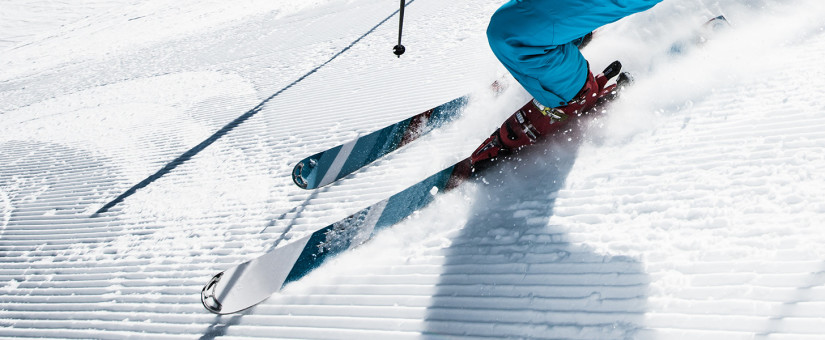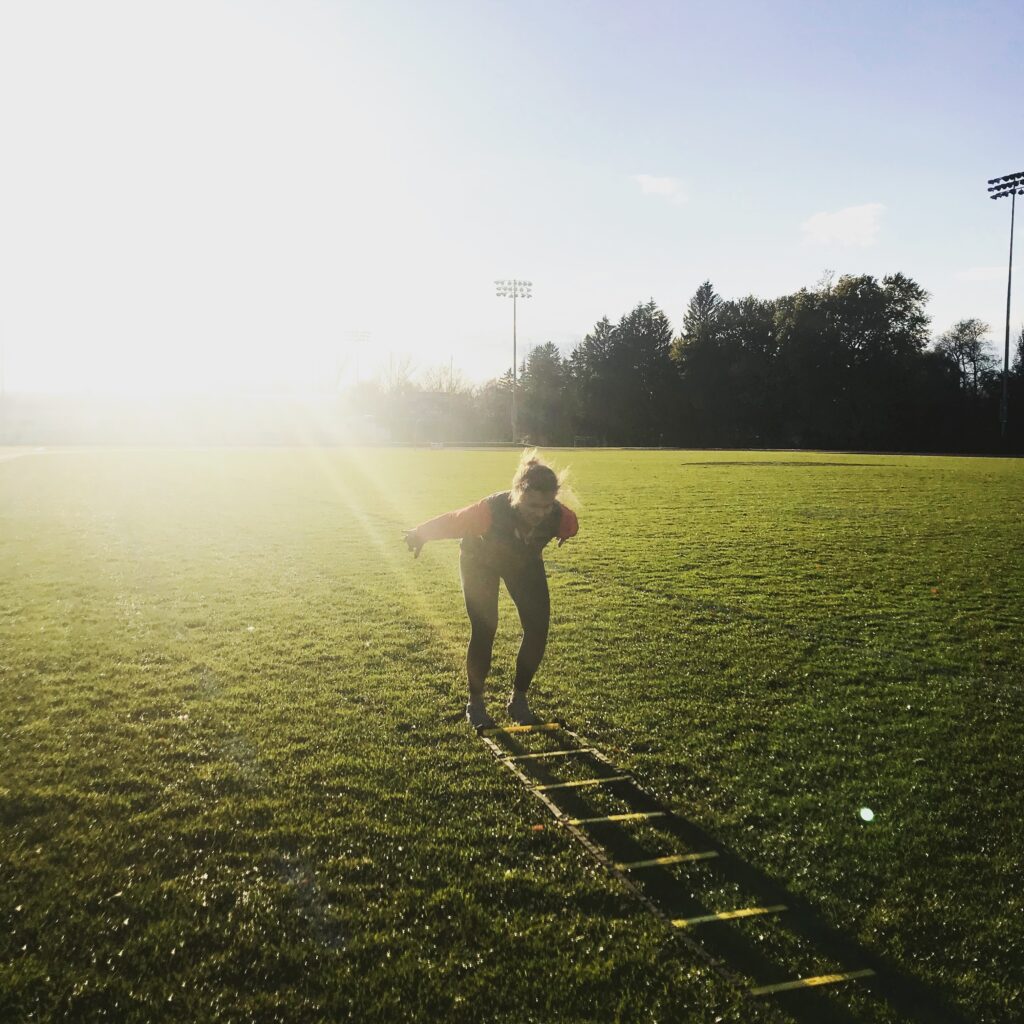
Dryland Training for Alpine Skiing: Where does the mental training part come in?
Dryland Quality or Quantity: What Gets You Down the Mountain Faster?
Written by Lindsay Ahmann, St. Lawrence University Alpine Ski Team
I am a D1 collegiate ski racer who loves, loves, loves the speed events like Super G and Downhill. My goal is to blister the slopes with insanely fast freeway like speeds. I only get better at skiing better on the snowy mountains, right? Not exactly the full answer. When athletes think of the off-season, we tend to think of the training that we will be doing in the gym or on the field. It’s easy to dread the hot days working on footwork drills or the long weightlifting sessions followed by sore muscles and high fatigue levels. In contrast, we may look forward to getting back into really good shape from the missed gym sessions, school workload and the busy schedule during carnival (College race circuit) season. Either way, the off-season is here and it’s time to make the most of it! The benefits the dry land training during the off-season can potentially bring D1 Alpine skiers is substantial; however, there must be a meaningful approach. So, quality or quantity for dry land training?

As I stand at the top of a course in a spandex suit, on 210cm Downhill skis, about to race down a course that is a clear blue ice, I know I must be confident in everything that I have trained for, my physical abilities, and my mental strength. In conjunction with physical fitness, dryland training can also be a time for a skier to affectively train your mind so that you will be able to bring it all together and perform at your best when its go time!
Where does training this confidence begin? Quite simply, at the end of your previous season and through the dryland season.

Have you ever been out on the field doing a drill and wondering how that will help you strengthen your skiing abilities? I certainly have. I have skied for a Division 1 school for the past 3 years and I have found that training and conditioning in the off-season with intention is the only way to improve. Before I begin my dryland training sessions, I imagine myself standing in the start gate, pressuring the front of my boots and standing strong on my outside leg. I practice mental imagery in order to direct the focus of my training in order to perform better than the last time I kicked out of the start gate.

Division 1 skiing has progressed to the level where competitive ski racing is no longer just a winter sport, but all year-around. Grit and determination are needed while not only on the mountain, but during the off-season in order to keep progressing. Whether it is field work or weight lifting, pushing through the last set or reps to reach your goal is what adds the quality to your dryland off-season training. That being said, intentional training is a ‘must-have’ in order to maximize your off-season training leading into the competition season.
In my personal experience, there are a significant amount of coaches who provide conditioning and training programs with very little intention. This is where the “quality over quantity” concept that is described by Dr. Jim Taylor comes into effect (Taylor, 2018). It is significantly more effective to train with intention, give your body rest days as needed, and not over train, in order to avoid burnout and diminished performance due to fatigue levels. It can be related to the Yerkes-Dodson law showing that over/under-arousal will negatively affect performance, whereas finding a balance and the optimal level, will increase performance (Shrestha, 2017).

Optimal arousal levels are different for everyone; I narrow my focus 4 people before I kick out of the gate, whereas my competitors will all have different strategies for their most successful performance.
Dryland training can be a primary factor of burnt out athletes and make them resent ski racing all together because of the excess of training they are doing, with little performance reward due to exhaustion. Instead of your coach just telling you to go for a run or get a workout in, set a goal for your workout imagining yourself in the start gate; “I am going to do 3 sets of 10 lateral lunges for outside pressure, 3 sets of 5 high skips, and 3 sets of 10 forward single leg bounds to work on explosion”. The main point is, don’t train to just get tired, train with specific thought to the work you will do on the hill to help you push through the fatigue more effectively. This is a huge way to combine mental and physical training and will definitely help you make progress!
Over the years as a club team ski racer and in college ski racing, I have found that intentional and quality dry land training shows to be the most effective route to improvement. The combination of quality mental (eg. imagery, goal setting, self-talk, etc.) and physical training (eg. agility, weightlifting, nutrition, etc.) while juggling school, on-hill training and equipment prep is what will set you ahead of the curve when it comes time to kick out of the start gate.
References
Shrestha, P. (2017). Yerkes-dodson law. Retrieved from https://www.psychestudy.com/general/motivation-emotion/yerkes-dodson-law
Taylor, D. J. (2018). The fall matters, make it count. Retrieved from https://www.drjimtaylor.com/4.0/the-fall-matters-make-it-count-2/
- sport in a pandemic: Crisis or opportunity?Chapter 4 - December 4, 2020
- Crafting the Perfect 10: - November 6, 2020
- Sport in a Pandemic:CRISIS OR OPPORTUNITY?Chapter 3 - September 23, 2020


